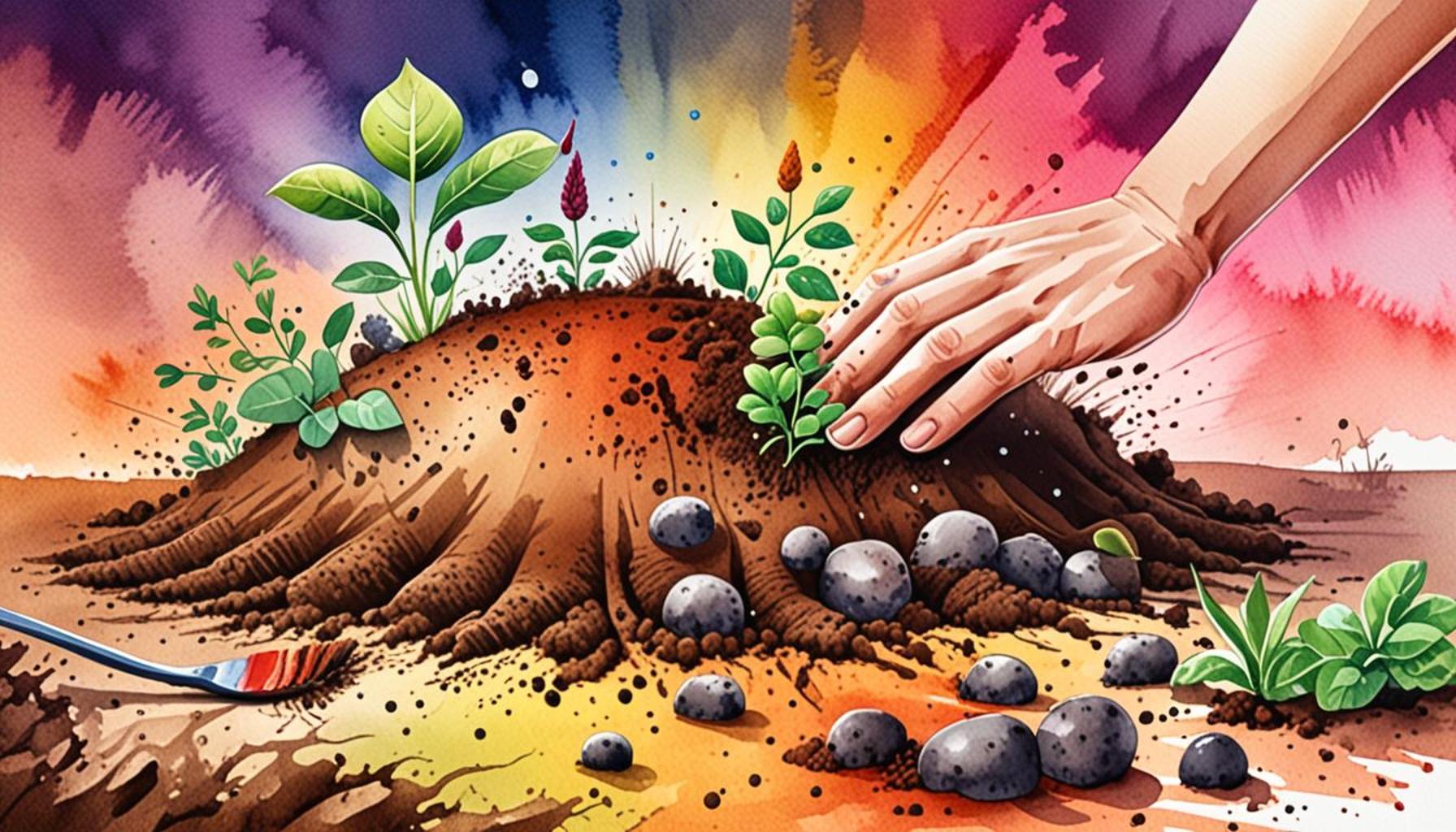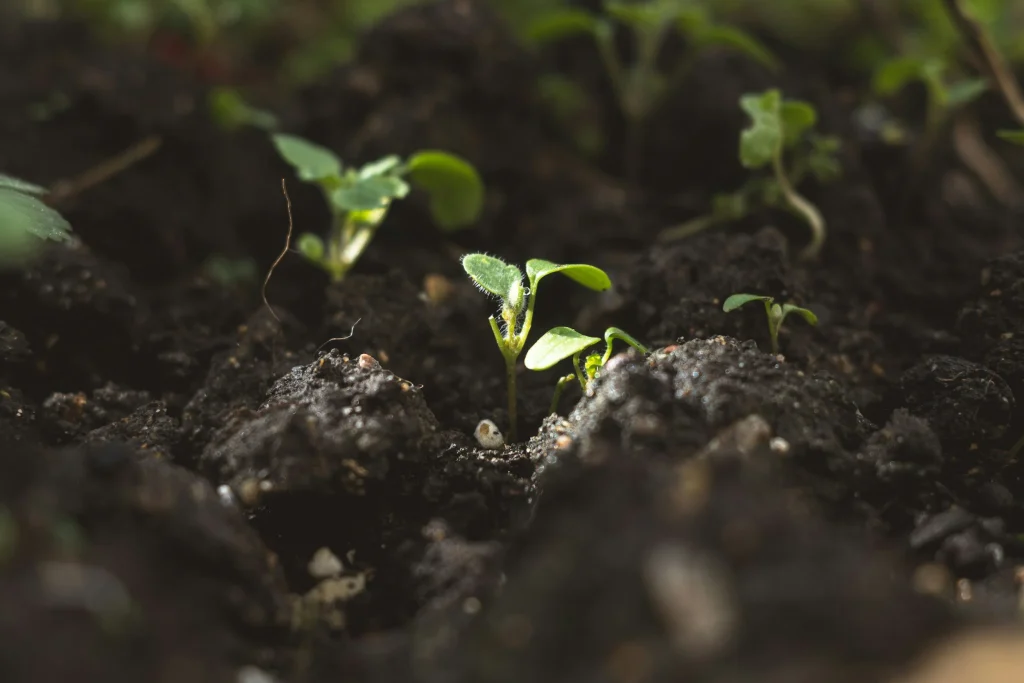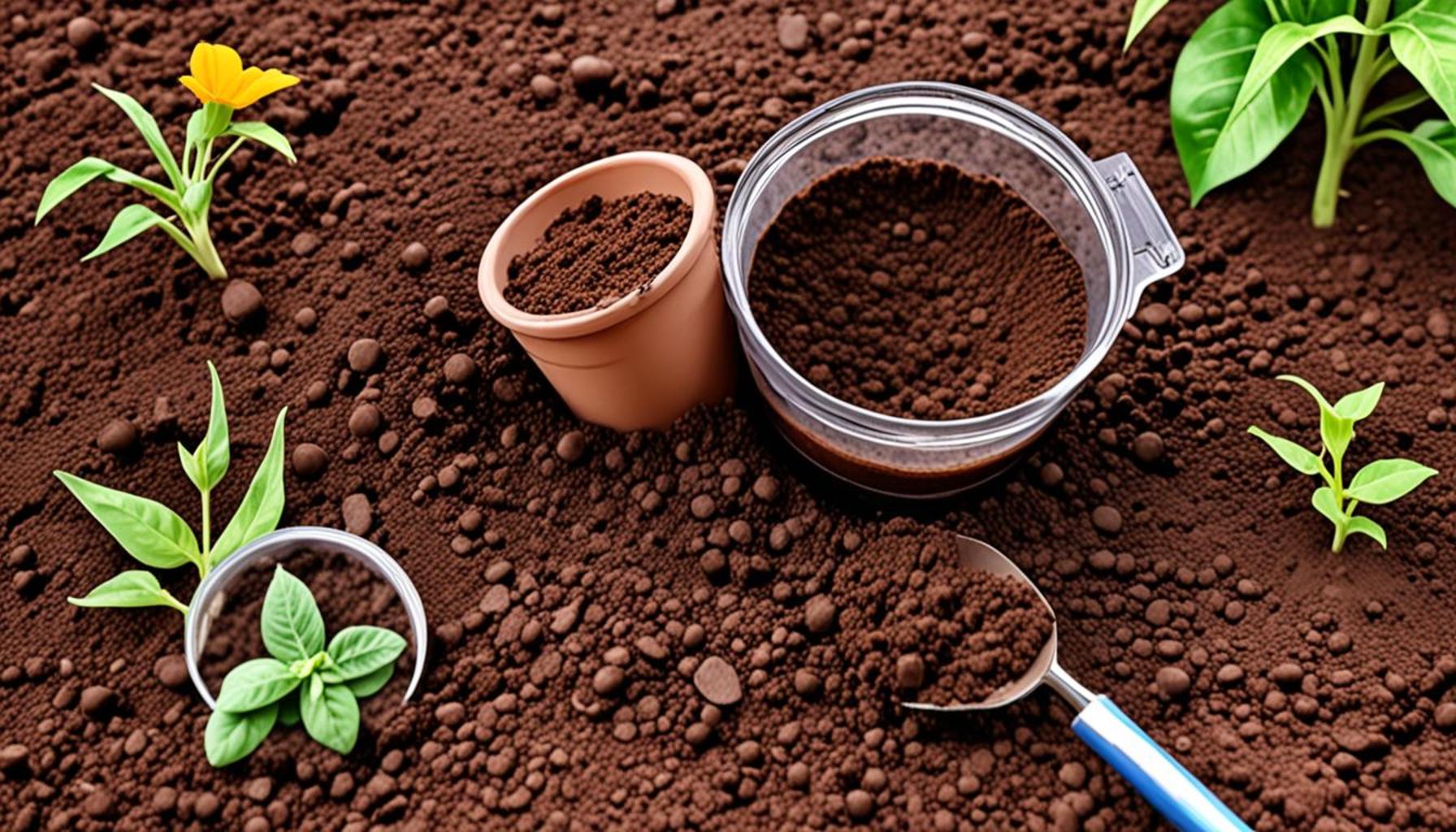The Influence of Microorganisms on Soil Preparation: How to Cultivate a Living and Rich Soil

The Role of Microorganisms in Soil Health and Preparation
Microorganisms are often overlooked when considering the complex balance of life that exists below the surface, yet they are essential players in the ecosystem of soil. They contribute not only to its health and fertility but also enhance the broader dynamics of agriculture and gardening. The intricate relationships among these microscopic organisms set the stage for a thriving agricultural landscape.
Bacteria and fungi, for instance, are the heavyweights of organic matter decomposition. Bacteria break down organic materials, such as plant residues and animal manure, into simpler forms that can be easily absorbed by plants. Meanwhile, fungi, with their vast networks, decompose more complex substances like lignin and cellulose, releasing crucial nutrients back into the soil. This process is not merely about recycling; it also involves creating organic matter, known as humus, which improves soil structure and fertility.
In addition to bacteria and fungi, protozoa and nematodes serve vital functions in maintaining soil health. These microorganisms are beneficial predators that feed on bacteria and other organic materials, which helps control harmful pests in the soil. For example, certain nematodes target and kill pest larvae, ultimately reducing the need for chemical pesticides. By facilitating nutrient cycling, they convert nutrients locked within organic material into forms accessible to plants, enhancing growth and resilience.
Another remarkable group, mycorrhizal fungi, form symbiotic relationships with plant roots. They extend the root system significantly, increasing the surface area for water absorption and nutrient uptake. This connection not only allows plants to thrive in nutrient-poor soils but also helps improve soil structure through the creation of stable aggregates, which enhance water retention and aeration.
Utilizing these microorganisms can lead to sustainable agricultural practices. For example, farmers who implement cover cropping or no-till farming methods often report improved soil health due to enhanced microbial activity. Such practices not only preserve the soil structure but also promote the vibrant life forms within it, resulting in higher crop yields and healthier plants that can better withstand environmental stressors, whether that be droughts or heavy rainfall.

In conclusion, understanding the power of microorganisms in soil preparation opens up new avenues for gardening and farming endeavors. By cultivating a living, rich soil ecosystem, individuals can significantly benefit their plants and contribute positively to the environment. As we delve deeper into this fascinating microbial world, numerous practical strategies can emerge that inspire not just improved agricultural practices, but also a more sustainable relationship with our land.
DIVE DEEPER: Click here to learn how to create your own mini garden
Unlocking the Power of Soil Microorganisms
The buzz surrounding organic farming has brought renewed attention to the thriving community of microorganisms that exist beneath our feet. Their influence on soil preparation is undeniable, shaping not just the soil’s physical structure but its entire ecosystem. Understanding these invisible allies is key to nurturing a living, rich soil capable of sustaining life.
Bacteria, one of the most abundant microorganisms in soil, can number in the billions per gram. These unseen workers are vital for the nitrogen cycle, where they convert nitrogen from the atmosphere into forms plants can utilize. Actinobacteria, in particular, are essential for decomposing organic matter; their metabolic processes break down complex compounds, resulting in nutrient-rich humus. As they consume dead plant and animal material, they contribute to the development of healthy soil structure, improving aeration and water retention.
Fungi, on the other hand, play a crucial role in breaking down tougher plant materials, such as wood and straw. Their long filamentous structures – known as hyphae – form a vast web in the soil, enhancing nutrient uptake and moisture retention for plants. Mycorrhizal fungi, a subgroup of fungi, partner with almost 90% of plant species, extending their roots’ reach for water and nutrients far beyond what plants can access alone. This mutualistic relationship not only bolsters plant health but also enables the fungi to access carbohydrates produced by the plants during photosynthesis.
Benefits of Soil Microorganisms
- Nutrient Cycling: Bacteria and fungi play fundamental roles in the breakdown of organic materials, transforming nutrients into forms readily available to plants.
- Pest Control: Protozoa and nematodes act as natural predators, preying on harmful soil pests and maintaining a balanced ecosystem.
- Soil Structure Improvement: Mycorrhizal fungi create glomalin, a protein that binds soil particles into stable aggregates, enhancing soil structure and water retention.
- Increased Resistance: Healthy microbial communities improve plant resilience against diseases and stress, enabling crops to thrive in fluctuating environmental conditions.
Incorporating practices that bolster these microorganisms can revolutionize soil preparation. Farmers across the United States are beginning to recognize the benefits of methods such as composting, which not only enriches the soil with beneficial organisms but also enhances its overall structure and nutrient profile. Crop rotation and cover cropping practices are also gaining popularity as they promote diverse microbial populations and prevent soil degradation.
Understanding how to cultivate a living, rich soil is a journey into the microscopic world that lies beneath the surface. As we disseminate knowledge about these essential microorganisms, we unveil new strategies that not only elevate agricultural yield but also usher in more environmentally sustainable practices. The relationship between soil preparation and microorganisms captivates the imagination, encouraging us to explore further the wonders of soil life.
The Role of Microorganisms in Soil Health
Microorganisms play a pivotal role in enhancing soil health and fertility. They contribute to the nutrient cycle, breaking down organic matter and facilitating the availability of essential elements for plants. Bacteria, fungi, and other microorganisms collaborate in complex ecosystems, ensuring that nutrients such as nitrogen, phosphorus, and potassium are accessible for plant uptake. This process not only enriches the soil but also promotes a thriving ecosystem that supports plant growth.
Enhancing Soil Structure
Another significant impact of microorganisms is their ability to improve soil structure. When microorganisms metabolize organic matter, they produce substances like glomalin and other polysaccharides that help bind soil particles together. This binding enhances the soil’s aggregation, leading to improved aeration and water retention. Consequently, cultivators can achieve a healthier growing environment that fosters robust plant development.
Microbial Interactions
The interactions among different microorganisms are equally vital. Mycorrhizal fungi, for instance, extend the root systems of plants, creating a network that allows for greater nutrient absorption. These fungi also assist in drought resistance and disease protection, acting as a buffer against environmental stressors. Understanding these symbiotic relationships is crucial for anyone looking to cultivate a living and rich soil.
Promoting Biodiversity
Fostering a diverse microbial community is essential for sustainable soil management. By implementing practices such as crop rotation, cover cropping, and reduced tillage, farmers can encourage a variety of microorganisms to thrive. This biodiversity ensures resilience against pests and diseases, thereby reducing the need for chemical fertilizers and pesticides. Exploring these practices can lead to innovative strategies for enhancing soil health and productivity.
| Advantages | Benefits |
|---|---|
| Soil Fertility Improvement | Microorganisms enhance nutrient availability, leading to improved plant growth. |
| Soil Structure Enhancement | Microbial activity enhances soil aggregation, improving water retention and aeration. |
Incorporating these principles rooted in microbial activity creates a pathway towards healthier soils and yields, ultimately leading to sustainable agricultural practices. Engaging with the science of soil microbiology opens up avenues for further learning and practices that can transform modern farming.
DISCOVER MORE: Click here for essential soil preparation tips
Enhancing Soil Health Through Microbial Diversity
As we delve deeper into the world of microorganisms and their impact on soil preparation, the concept of microbial diversity emerges as a cornerstone in cultivating rich and vibrant soil. A diverse microbial community not only optimizes nutrient availability but also enhances ecosystem resilience, making it vital for sustainable agriculture.
Diversity among microorganisms enables soil to respond favorably to environmental changes and stresses. When a variety of microbes coexist, they create a dynamic network that can efficiently recycle nutrients and suppress disease-causing agents. Studies have shown that soils with higher microbiome diversity exhibit greater fertility and are more capable of resisting pests and diseases, essential factors for farmers looking to ensure yield stability.
Another key player in this microbial symphony is earthworms, which, while not microorganisms themselves, work hand in hand with bacteria and fungi. As they burrow through the soil, they aerate it and promote water infiltration, benefiting the overall microbial community. Their castings, rich in nutrients, serve as a powerful natural fertilizer, enhancing soil quality and stimulating microbial activity. Incorporating earthworms into soil management practices can foster healthier microbial ecosystems essential for plant growth.
Innovative Practices for Microbial Enrichment
To harness the benefits of microorganisms, farmers and gardeners are adopting innovative practices that encourage microbial growth and diversity in their soils. One such practice is biochar, a form of charcoal produced from organic matter through pyrolysis. When mixed into the soil, biochar serves as a habitat for beneficial microbes, fostering their proliferation while simultaneously improving soil structure. Research indicates that biochar can enhance microbial biomass and activity, supporting nutrient cycling and soil health.
Fermented plant extracts have also gained popularity among those focused on sustainable farming methods. These extracts are rich in beneficial microorganisms, which can help restore and enhance the microbial community in soil. By introducing these live microorganisms directly into the soil, farmers can rapidly boost the population of beneficial bacteria and fungi, leading to improved soil fertility and plant health.
- Soil Testing: Regular soil tests help identify microbial populations and nutrient levels, allowing for precise amendments that support a balanced ecosystem.
- Integrated Pest Management (IPM): Utilizing beneficial microorganisms as a biological control method serves to minimize reliance on chemical pesticides, fostering a healthier soil biome.
- Mulching: Organic mulches not only suppress weeds but also provide a rich source of organic material as they decompose, attracting diverse microbial populations.
- Minimal Soil Disturbance: Practices such as no-till farming preserve the intricate web of soil life, maintaining a stable environment for beneficial microorganisms.
Exploring these methods not only enriches the soil with microorganisms but builds a resilient agricultural ecosystem capable of sustaining not just crops but the very environment in which they grow. As awareness of the crucial relationship between microorganisms and soil health continues to spread, it is clear that an investment in microbial diversity is an investment in our future, promoting sustainable agricultural practices across the nation. The alignment of agricultural strategies with the natural dynamics of soil microbial communities stands poised to revolutionize how we approach soil preparation and cultivate lands for generations to come.
CHECK THIS OUT: Click here for low-maintenance plant ideas
Conclusion: The Future of Soil Preparation Through Microbial Wisdom
In conclusion, the interplay between microorganisms and soil preparation stands as a pivotal factor in cultivating living, rich soils that sustain healthy ecosystems and productive agriculture. By embracing microbial diversity, we unlock the potential for enhanced soil health, improved nutrient availability, and increased resilience against diseases and environmental challenges. Each grain of soil teems with life, and nurturing this microbial community can lead to a more sustainable future for our farms and food systems.
The adoption of innovative practices such as the use of biochar, fermented plant extracts, and sustainable soil management techniques not only enriches the soil but also fosters dynamic ecosystems that thrive under minimal disturbance. As scientists and agriculturists continue to uncover the intricacies of the soil microbiome, it is evident that practices like integrated pest management, regular soil testing, and minimal soil disturbance play critical roles in enhancing soil vitality.
The journey toward understanding and utilizing microorganisms is just beginning. There exists a vast opportunity to further research and apply knowledge that can promote healthy soils and abundant harvests. As we continue to explore how to cultivate a living and rich soil, it becomes clear that investing in microbial diversity is not just beneficial—it’s essential for a sustainable future. By aligning our agricultural practices with the natural rhythms of the soil, we can foster a flourishing environment that not only feeds our populations but also respects and preserves our precious earth for generations to come.



